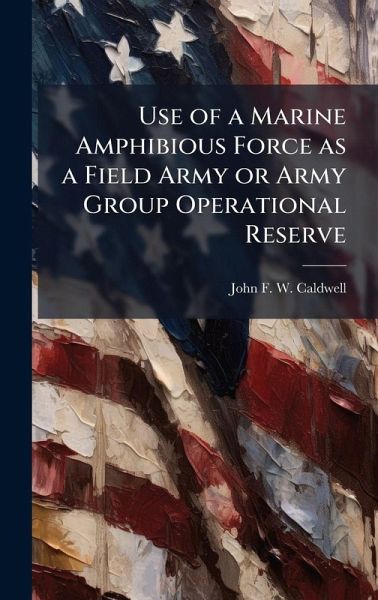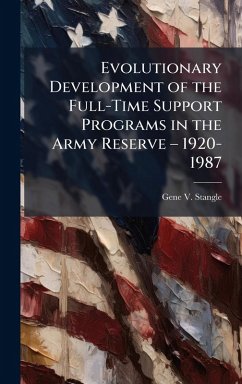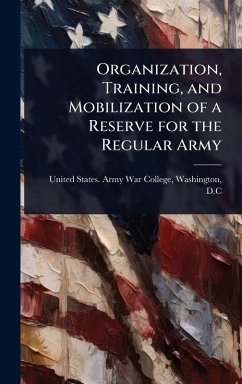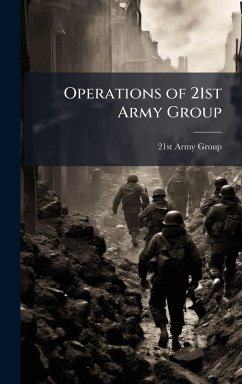
Use of a Marine Amphibious Force as a Field Army or Army Group Operational Reserve
Versandkostenfrei!
Versandfertig in über 4 Wochen
28,99 €
inkl. MwSt.
Weitere Ausgaben:

PAYBACK Punkte
14 °P sammeln!
The intent of this monograph is to analyze whether a Marine Amphibious Force (MAF) is suitable to function as an operational reserve for an echelon above corps (EAC) headquarters. In conducting this analysis the structure of a MAF is dissected to provide its composition and capabilities. A historical example is then studied to describe any synergistic effects the Marine air/ground team has on the enemy. Finally, the advantages and disadvantages of a MAF as an operational reserve are examined during both offensive and defensive operations. The author concludes that should a MAF be available for...
The intent of this monograph is to analyze whether a Marine Amphibious Force (MAF) is suitable to function as an operational reserve for an echelon above corps (EAC) headquarters. In conducting this analysis the structure of a MAF is dissected to provide its composition and capabilities. A historical example is then studied to describe any synergistic effects the Marine air/ground team has on the enemy. Finally, the advantages and disadvantages of a MAF as an operational reserve are examined during both offensive and defensive operations. The author concludes that should a MAF be available for commitment to sustained ground combat its use as an operational reserve for an EAC commander is an excellent use of its fighting capabilities. Its employment could well mean the difference between defeat or victory during the early stages of a war. With much of a potential MAF already loaded and at sea the possibility of a MAF fighting ashore for sustained periods grows as the defense budget shrinks. This work has been selected by scholars as being culturally important, and is part of the knowledge base of civilization as we know it. This work was reproduced from the original artifact, and remains as true to the original work as possible. Therefore, you will see the original copyright references, library stamps (as most of these works have been housed in our most important libraries around the world), and other notations in the work. This work is in the public domain in the United States of America, and possibly other nations. Within the United States, you may freely copy and distribute this work, as no entity (individual or corporate) has a copyright on the body of the work. As a reproduction of a historical artifact, this work may contain missing or blurred pages, poor pictures, errant marks, etc. Scholars believe, and we concur, that this work is important enough to be preserved, reproduced, and made generally available to the public. We appreciate your support of the preservation process, and thank you for being an important part of keeping this knowledge alive and relevant.












